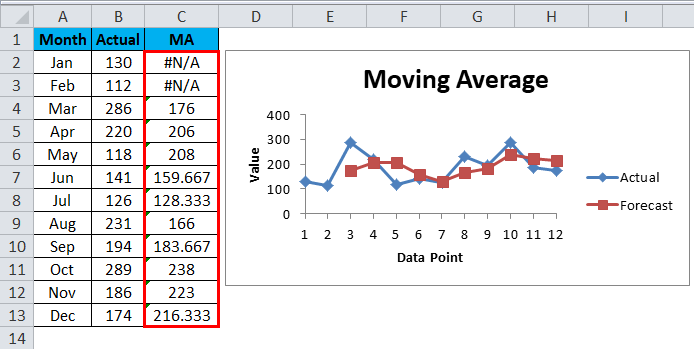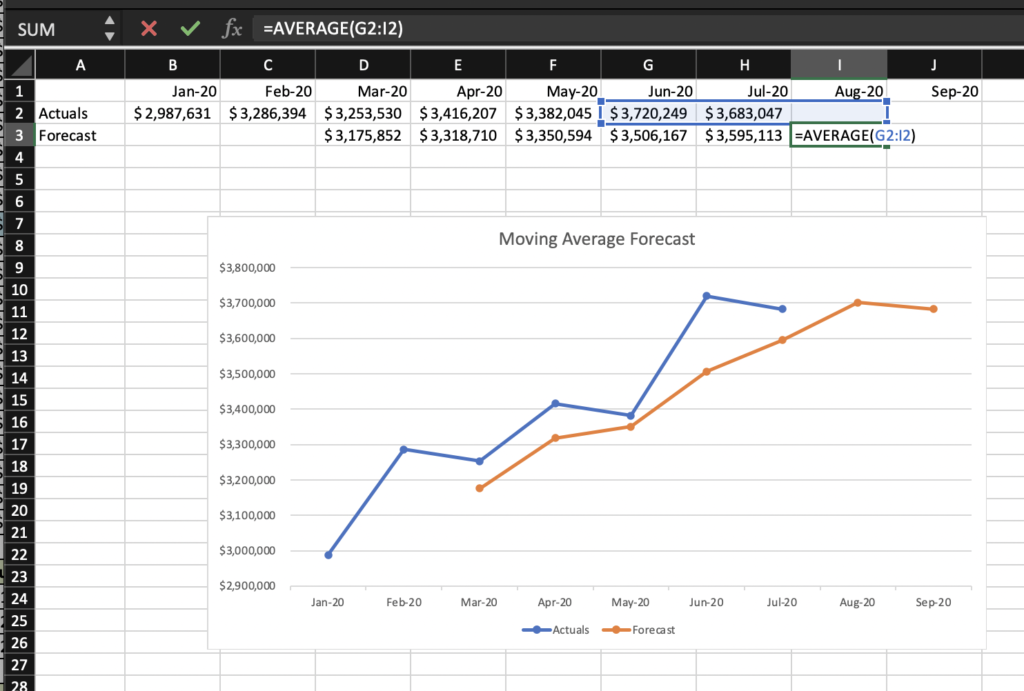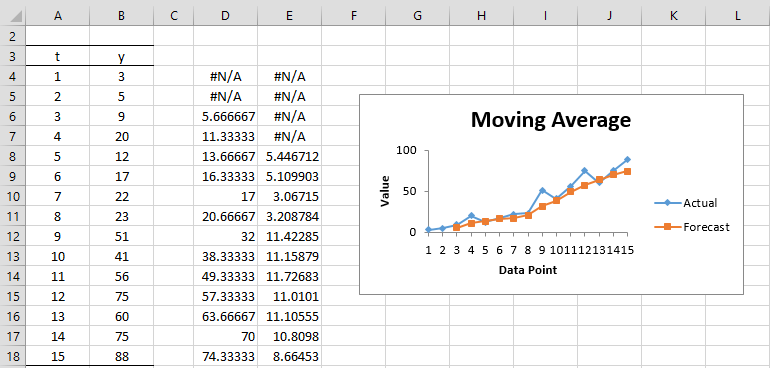When it comes to making informed decisions in business, having accurate and reliable forecasts is crucial. One popular forecasting technique used by many professionals is the moving average forecast. This method allows you to analyze past data and make predictions about future trends.
In this article, we will delve into the world of printable moving average forecasts. We will explore what they are, how they work, and why they are important. Whether you are a seasoned analyst or just starting, this guide will provide you with all the information you need to effectively use moving averages for forecasting.

What is a Moving Average Forecast?
A printable moving average forecast is a tool used to predict future trends by analyzing past data. It is a mathematical calculation that smooths out fluctuations in data, allowing you to identify patterns and make predictions. The forecast is called “moving” because it constantly updates as new data becomes available.
Printable moving average forecasts are widely used in various industries, including finance, economics, and marketing. They can be applied to any type of data, such as sales figures, stock prices, or website traffic. By using moving averages, businesses can make informed decisions about inventory management, budgeting, and marketing strategies.

How Does a Moving Average Forecast Work?
The concept behind a printable moving average forecast is relatively simple. It involves calculating the average of a specific number of data points and using that average to make predictions about future trends. The number of data points used in the calculation is known as the “window size” or “period.”
For example, let’s say you have monthly sales data for the past year and want to make a forecast for the next quarter. You could use a 3-month moving average by averaging the sales data for each consecutive 3-month period. This would give you a smoother trend line that can help you identify any upward or downward trends.
There are different types of moving averages, including simple moving averages (SMA) and exponential moving averages (EMA). The choice of which one to use depends on the specific requirements of your analysis. Both types have their advantages and disadvantages, so it’s important to understand their differences and choose the most appropriate one for your needs.

Why Should You Use a Printable Moving Average Forecast?
There are several reasons why using a printable moving average forecast can be beneficial for your business:
- Identify Trends: Moving averages help you identify trends and patterns in your data. By smoothing out fluctuations, you can see the underlying trend more clearly.
- Make Predictions: With a moving average forecast, you can make predictions about future trends and plan accordingly. This can help you make informed decisions and stay ahead of the competition.
- Reduce Noise: Moving averages eliminate noise and outliers in your data, providing you with a clearer picture of the overall trend.
- Monitor Performance: By regularly updating your moving average forecast, you can monitor the performance of your business and make adjustments as needed.
- Improve Decision-Making: With accurate forecasts, you can make better decisions about inventory management, budgeting, and marketing strategies.

How to Calculate a Moving Average Forecast
Calculating a printable moving average forecast is relatively straightforward. Here’s a step-by-step guide:
- Select a Window Size: Determine the number of data points you want to include in your moving average calculation. This will depend on the time frame and the level of detail you need.
- Add Up the Data Points: Sum up the values of the data points within the window size.
- Divide by the Window Size: Divide the sum by the window size to calculate the moving average.
- Repeat for Each Data Point: Move the window along the data set and recalculate the moving average for each new data point.
By following these steps, you can easily calculate a printable moving average forecast for any set of data.
Example of a Moving Average Forecast
Let’s say you have monthly sales data for a retail store for the past year and want to make a forecast for the next quarter. You decide to use a 3-month moving average to smooth out any fluctuations. Here’s how the calculation would look:
- January-March: Sum up the sales for January, February, and March, and divide by 3 to get the moving average for the first quarter.
- February-April: Move the window along and recalculate the moving average for the second quarter.
- March-May: Repeat the process for the third quarter.
- April-June: Calculate the moving average for the fourth quarter.
By using this method, you can create a printable moving average forecast that shows the sales trend for each quarter and helps you make predictions about future sales.

Tips for Using a Printable Moving Average Forecast
If you’re considering using a printable moving average forecast for your business, here are some tips to keep in mind:
- Choose the Right Window Size: The window size determines the level of detail and smoothness of your forecast. Experiment with different window sizes to find the one that works best for your analysis.
- Regularly Update Your Forecast: As new data becomes available, update your moving average forecast to reflect the latest trends. This will ensure that your predictions are as accurate as possible.
- Consider Multiple Moving Averages: Instead of relying on a single moving average, you can use multiple moving averages with different window sizes to get a more comprehensive view of the data.
- Combine with Other Forecasting Techniques: Moving averages are just one tool in your forecasting toolbox. Consider combining them with other techniques, such as regression analysis or time series analysis, for more accurate predictions.
- Be Mindful of Seasonality: If your data is subject to seasonal patterns, make sure to account for them in your moving average forecast. Adjust the window size or use seasonal adjustment techniques to get more accurate results.
- Validate Your Forecast: Regularly compare your moving average forecast with actual data to validate its accuracy. This will help you identify any discrepancies and make adjustments if necessary.
Conclusion
A printable moving average forecast is a powerful tool that can help businesses make informed decisions and predict future trends. By analyzing past data and smoothing out fluctuations, you can identify patterns and make accurate predictions about future performance. Whether you’re a business owner, analyst, or marketer, understanding how to use moving averages for forecasting can give you a competitive edge in today’s fast-paced business environment.
Moving Average Forecast Template – Excel